Sewing with a PDF Pattern {The Basics}

Since it's the beginning of a new year, we wanted to take the opportunity to review some Violette Field Threads sewing pattern basics such as; printing our PDF patterns, assembling the pattern, and choosing the correct size.
While we know most of you are seasoned pros at this point, we also know there are some newcomers to VFT and to the wonderful world of sewing. When we started Violette Field Threads, the intent was to make sewing EASY! As with most new ventures, until you get familiar with the process, there may be a little trepidation! Continue reading, and you'll gain confidence to get rolling!
The start of a new year is also a perfect time to measure your little one and see how much they grew over the last year...and to make sure you're sewing the correct size as you're thinking about Spring and Summer wardrobe sewing! Or maybe I'm the only one who thinks about Summer sewing as soon as January starts?!
Let's start with PRINTING your pattern:
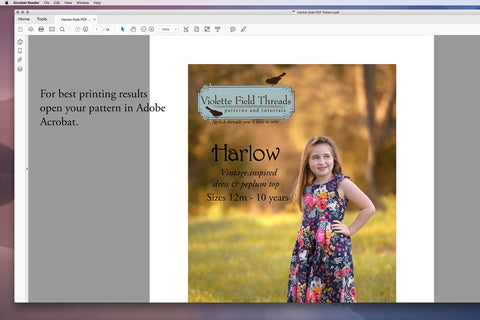
First, you'll want to open your pattern in Adobe Acrobat. While it is possible to view your pattern on other platforms, like Preview, etc., it is always recommended to print your pattern from Adobe Acrobat. If you do have Adobe Acrobat you can optionally download Adobe Reader (for free) from the Adobe Website.
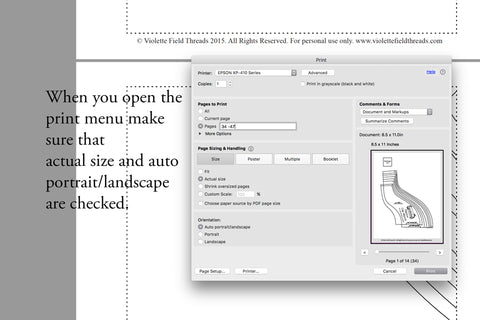
When you open the print menu you'll want to select the pages to print, I typically only print the pattern pages I need and use the cutting chart measurements wherever possible (for square or rectangle measurements). I do find it helpful to print the cutting chart page, that way I have everything at hand while cutting and don't have to make multiple trips to the computer. Make sure that "actual size" and "auto portrait/landscape" are selected and you're ready to print.
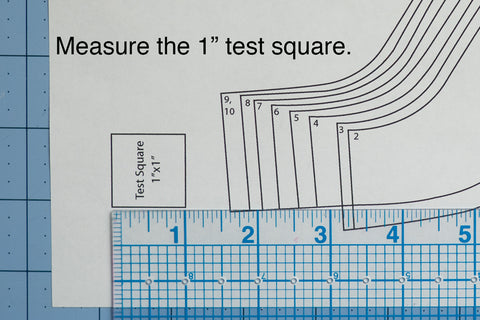
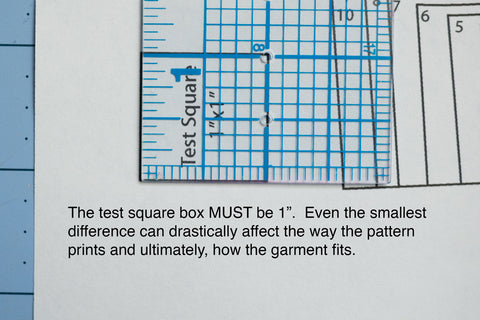
This is one of the most important and often overlooked steps! Measure the 1" test square box (which prints on the first page) to check for print accuracy. {NOTE: You may want to print just the first page of the pattern pieces at first to make sure the test square is accurate. If it is, continue printing the remaining pages. If it isn't accurate, you'll have to throw away the printed pages and start over}
If the box is even 1/8" too small or too large the pattern will not sew to the intended size. Example: If your box is measuring 1/16" too small, that means for every 1" of the pattern, it's 1/16" too small. Over the space of an average bodice, which is say 20", that really adds up! Multiply 1/16" x 20 and that means your bodice would be 1 1/4" smaller than it should be! If an average pattern has a 1 1/2" amount of ease built in, you'd end up with a garment that you could barely squeeze on!
So, recap: Sewing from an improperly printed pattern can result in a garment that is either too large, too small, or all around ill fitting. Check that 1" test square on the 1st page of the pattern pieces.
Now onto ASSEMBLING your pattern:
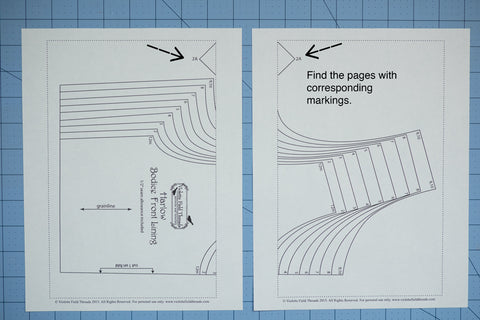
To assemble your pattern, find the pages with corresponding markings.
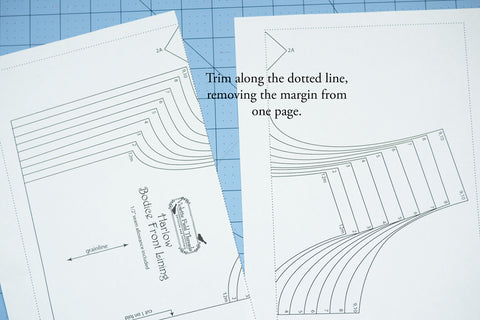
Trim along the dotted line on one of the pages, removing the margin.
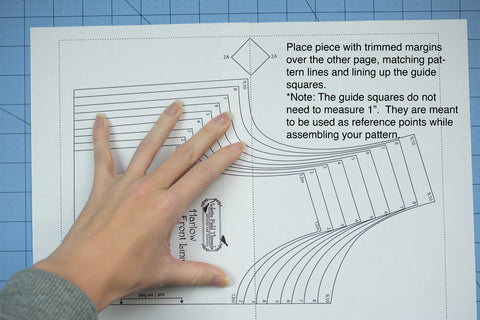
Place the piece with the margin removed on the other piece, matching the dotted lines. Check to make sure the pattern lines are matching and that the guide squares are lining up. The guide squares do not need to measure 1", they're meant to be used as reference points for assembling the pattern.
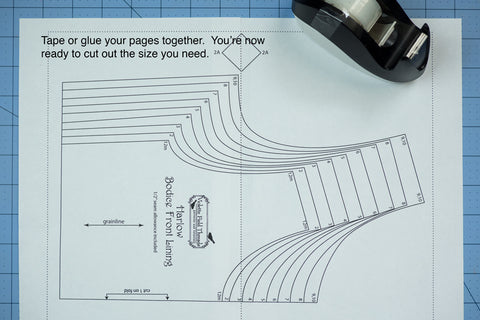
Tape or glue the pages together once you're satisfied with how everything is aligned. Repeat this process for all of the pages until the pattern is complete. You can use tracing paper and trace the size you need or cut it out directly. I tend to cut it out directly because I can reprint the pattern as many times as I want.
Now let's DETERMINE YOUR CHILD'S SIZE:
In order to choose the proper size, you'll need current measurements of your little one. I measure my daughter once every 2-3 months, it's fun for her because I fuss over how much she's growing (even though I wish she'd slow down just a little!) and it ensures that I'm always sewing the proper size for her. I measure her height first and then move on to bust (chest), waist, and hip. You can record your measurements on this {free printable}.
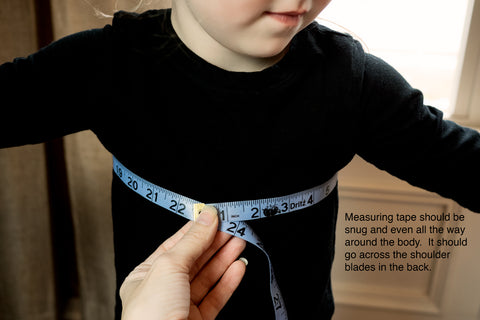
Ideally, your child would be wearing a camisole or something very close fitting to the body so that your measurements are as accurate as possible. For the Chest/Bust Measurement, wrap the measuring tape around the torso, just under the arms and across the shoulder blades in the back, with the arms just slightly raised. Try to keep the tape as level as possible. Keep the tape snug but not tight. Record your measurement.
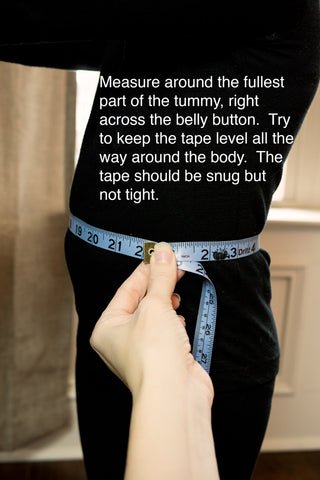 To measure the Waist, wrap the tape around the body just about at belly button level (for toddlers this should be the fullest part of the tummy). For older teenage girls, you may want to measure at the natural waistline, which will generally be a couple inches above the belly button, depending on height. Again the measuring tape should be snug, but not tight.
To measure the Waist, wrap the tape around the body just about at belly button level (for toddlers this should be the fullest part of the tummy). For older teenage girls, you may want to measure at the natural waistline, which will generally be a couple inches above the belly button, depending on height. Again the measuring tape should be snug, but not tight.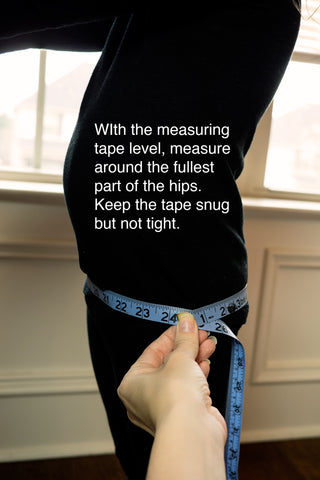
Repeat this process at the hip, wrapping the measuring tape around the fullest part of the hips and bottom. Remember to record your measurements!
My daughter's measurements are:
Now we'll SELECT the proper size to sew:
Now we'll use the size chart from the Luna pattern, one of my all time favorites, to select the proper size.
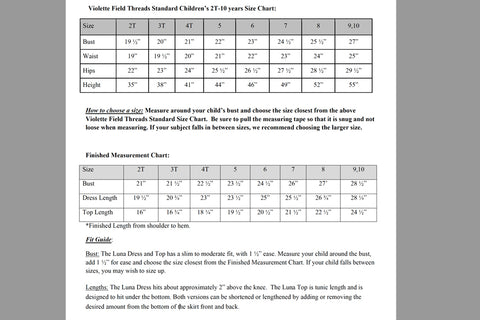
First, look at the size chart and determine which size she falls into according to her measurements. For bust and waist she's a size 5, but her hip measurement falls between a size 3 and size 4. Since Luna is a dress, the hip measurement doesn't really matter too much. I can now use the Finished Measurement chart, along with the fit guide, to make sure I've chosen the correct size. For Luna, there's 1 1/2" of ease, which means that sewn properly there will be 1 1/2" of room between her body and the garment. The finished chest measurement for a size 5 is 23 1/2" which will fit her comfortably since she has a 22" chest. She'll have just the right intended "ease" of this pattern, with is 1 1/2".
Now, here's the thing, not all children fall perfectly in the size chart. Sometimes they are right in between sizes. What do you do?
Let's say her chest measurement was smaller, say 21 1/2" and her waist was 20 1/2", that would be directly between a size 4 and size 5. The fit guide and finished measurements would be even more valuable in helping me choose the correct size to sew. I would need to decide whether to size down to a 4, or up to a size 5. The finished chest measurement for a size 4 is 22 1/2" which would only give 1" of ease. Luna is made from woven fabrics, which generally require a bit more ease for comfort. Luna also does not have a zip or button back and that 1 1/2" of recommended ease is necessary for easy dressing. In this case I would sew a size 5 so that there was enough ease for the dress to fit comfortably. She'd have 2" of ease (instead of the recommended 1 1/2" of ease).
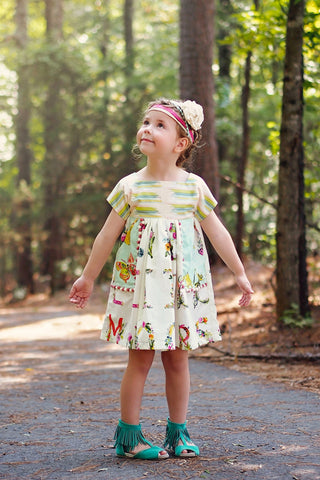
There you have it! Following these tips will ensure you have a successful and fun sewing experience!
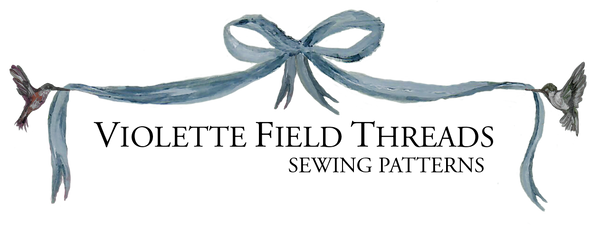
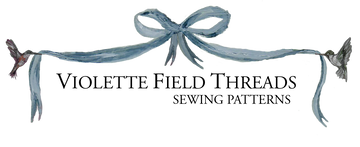
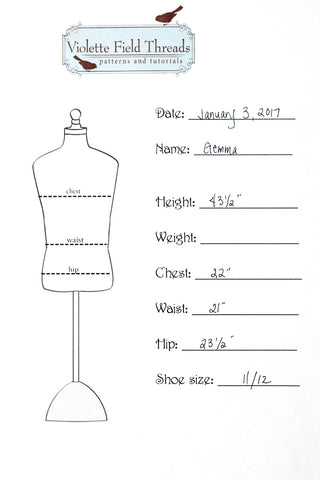
Thank You.
Leave a comment